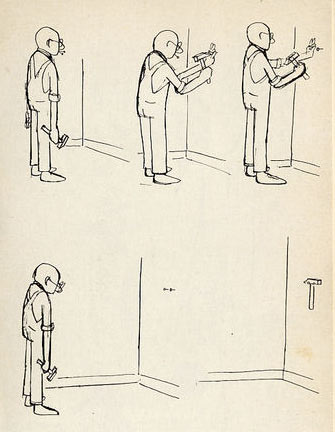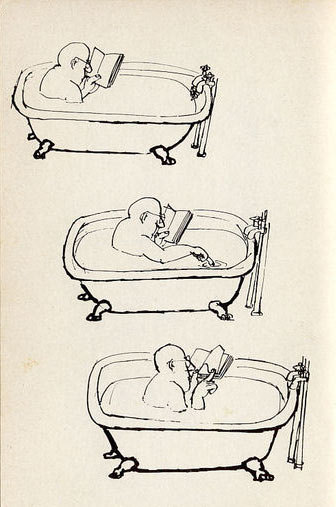André François, born André Farkas on November 9, 1915, in Temesvár, Austria-Hungary (now Timișoara, Romania), left an indelible mark on the world of cartooning and illustration. His journey from the Academy of Fine Arts in Budapest to the vibrant streets of Paris shaped his artistic prowess and unique perspective on humor and satire. André François passed away on April 11, 2005, in Grisy-les-Plâtres, Val-d’Oise, leaving behind a legacy that inspires and influences artists globally.
André François
Born: November 9, 1915
Birthplace: Temesvár, Austria-Hungary (now Timișoara, Romania)
Died: April 11, 2005 (Age 89)
Place of Death: Grisy-les-Plâtres, Val-d’Oise, France
Nationality: French
Area(s): Cartoonist, Painter, Sculptor, Graphic Designer
Biography
André François, born André Farkas, was a Hungarian-born French cartoonist, known for his innovative contributions to cartoons, children’s literature, and the arts.
Publications
-
- Les Larmes de Crocodile = Crocodile Tears. Neuf No. 9. Paris: Maison de la Médecine, 1953.
- The Tattooed Sailor. (Introduction by Walt Kelly.) New York: Alfred Knopf. 1953.
- Crocodile Tears. London: Faber and Faber, 1955. ISBN 9780571090280. Translated by E.M. Hatt.
Early Life and Artistic Formation
André François, initially André Farkas, began his artistic journey in the Academy of Fine Arts in Budapest from 1932 to 1933. The young artist’s talent bloomed early, catching the attention of the renowned poster artist Adolphe Cassandre during his time in Paris (1935–36). This marked the beginning of François’ immersion into the vibrant artistic community of Paris, a city that would become his creative haven.
In 1939, André François became a French citizen, a significant step that reflected his commitment to his newfound home. Over the years, he diversified his artistic expression, working as a cartoonist, painter, sculptor, and graphic designer. His versatility in various mediums showcased the depth of his artistic abilities.
Rise to Prominence
François initially found a platform for his cartoons in French leftist newspapers, most notably in ‘Le Nouvel Observateur.’ His unique style, characterized by subtle humor and satire, drew attention and paved the way for collaborations with renowned authors like Jacques Prévert. François’ illustrations graced the pages of books, bringing narratives to life with his distinctive visual language.
As his career progressed, François reached a broader audience, not only in France but also internationally. His cartoons found a home in leading magazines across the United Kingdom, including the iconic ‘Punch,’ and in the United States, notably ‘The New Yorker.’ This global recognition solidified François’ position as a cartoonist of international acclaim.
One of the notable highlights of François’ career was his masterpiece cover illustration for the 1965 UK Penguin paperback edition of ‘Lord of the Flies.’ His ability to capture the essence of literary works through visual representation showcased his narrative prowess beyond the realm of humor.
Influences and Collaborations
André François’ work bears the influence of greats like Saul Steinberg. Much like Steinberg’s, his cartoons went beyond visual gags, delving into social commentary and introspection. François’s often-satiric style challenged the prevailing realism of the 1950s, inspiring a generation of artists to embrace a more divergent and expressive approach.
A significant chapter in François’ career was his collaboration with Ronald Searle, a partnership that extended beyond professional ties to a deep friendship. The camaraderie between these two artistic minds resulted in a creative synergy that enriched the world of cartooning.
Children’s Literature and Beyond
In the early 1950s, André François made a significant mark in children’s literature. His illustrations for various books, both as a collaborator and an author, showcased his ability to connect with younger audiences. The famous ‘Crocodile Tears’ (1955) stands out as a testament to François’s storytelling skills, blending humor and imagination in a way that resonates with children and adults alike.
François’ influence extended beyond the realm of cartooning and illustration. He ventured into set design for theater and ballet productions, adding another dimension to his multifaceted artistic career. This foray into theatrical design showcased François’ ability to translate his artistic vision into diverse mediums.
The Penguin André François and Later Works
In 1964, François compiled a collection titled ‘The Penguin André François.’ This anthology served as a retrospective, offering a glimpse into the evolution of his artistic style. As the years progressed, François contributed to the world of illustration and cartooning with works like ‘Toi et Moi’ (1973) and ‘André François’ (1986).
The collection ‘Toi et Moi’ exemplifies François’ ability to capture the complexities of human relationships with humor and wit. His work continued to evolve, adapting to the changing socio-cultural landscape while maintaining the essence of his distinct style. 
Legacy and Recognition
André François was not just an artist but a visionary whose impact on visual storytelling reverberates today. His membership in the Alliance Graphique Internationale solidified his position among the artistic elite, recognizing his significant contributions to the field.
The news of André François’ passing on April 11, 2005, marked the end of an era. His home in Grisy-les-Plâtres, Val-d’Oise, here he spent his final moments, became a symbolic space representing the culmination of a rich and prolific artistic journey.
Influence on Modern Art Forms
André François’ influence transcended his active years. Through the 1980s and beyond, his impact on illustration and cartooning remained formidable. Artists worldwide continued to draw inspiration from his distinctive style, embracing the spirit of innovation and satire that François championed.

Homage and Remembrance
The passing of André François prompted obituaries and tributes from various publications. The Guardian, New York Times, and Times (London) paid homage to this artistic luminary, reflecting on his contributions to the world of visual arts.
The Rencontres d’Arles festival in 2009 dedicated an exhibition to honor André François. This event served as a testament to his enduring legacy, bringing together admirers and art enthusiasts to celebrate the life and works of this visionary cartoonist.
Conclusion
In the realm of cartooning and illustration, André François remains an iconic figure whose influence continues to shape the work of contemporary artists. His ability to infuse humor with social commentary and a keen sense of visual storytelling set him apart as a true innovator.
As we reflect on André François’ life and career, we are reminded of his artistic brilliance and resilience in the face of evolving artistic trends. André François was not just a cartoonist; he was a storyteller, a provocateur, and a visionary whose legacy extends beyond the panels of his cartoons.
In the ever-evolving landscape of visual arts, André François stands as a beacon of inspiration, inviting artists to embrace the power of satire, the allure of imagination, and the timeless appeal of a well-crafted visual narrative.
Frequently Asked Questions (FAQs) about André François:
Who was André François?
André François was a Hungarian-born French cartoonist, painter, sculptor, and graphic designer known for his innovative cartoons and illustrations.
When and where was André François born?
André François was born on November 9, 1915, in Temesvár, Austria-Hungary, which is now Timișoara, Romania.
When did André François pass away?
André François passed away on April 11, 2005, at the age of 89, in Grisy-les-Plâtres, Val-d’Oise, France.
What was André François’s nationality?
André François became a French citizen in 1939, and his nationality was French.
In what artistic areas did André François work?
André François worked as a painter, sculptor, and graphic designer, notably a cartoonist.
Which influential artists inspired André François?
André François was influenced by artists such as Saul Steinberg and worked closely with Ronald Searle.
Where did André François publish his cartoons?
François initially worked for French leftist newspapers like Le Nouvel Observateur and later contributed to leading magazines in the United Kingdom (Punch) and the United States (The New Yorker).
What was André François’s contribution to children’s literature?
André François made a name for himself in children’s literature, illustrating books by various authors and creating his titles, including “Crocodile Tears” (1955).
Was André François involved in other artistic endeavors?
Yes, André François was a set designer for theater and ballet productions and worked as a cartoonist and illustrator.
What are some notable publications by André François?
Some of André François’s notable publications include “Les Larmes de Crocodile,” “The Tattooed Sailor,” and “Crocodile Tears.”
This post was created with our nice and easy submission form. Create your post!





One Comment